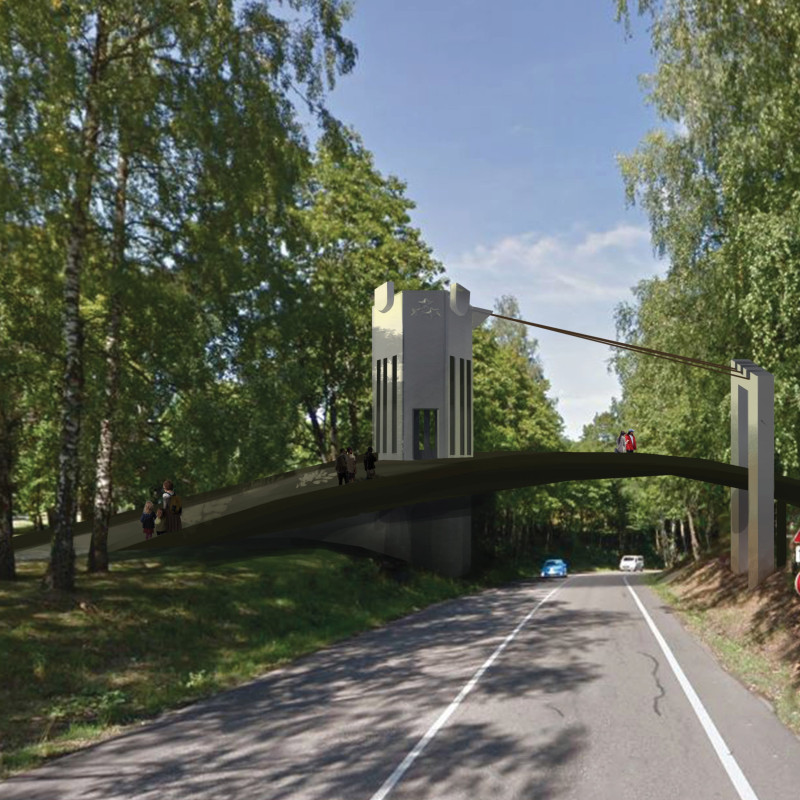5 key facts about this project
One of the significant aspects of this project is its representation of the number three, connected to Latvia's historical districts: Vidzeme, Latgale, and Courland. This triadic theme is reflected in the design’s form, which integrates a central tower with two vertical elements, creating a cohesive structure that serves both aesthetic and functional purposes. The architecture aims to invite introspection and connection to the natural environment, supporting the notion of a journey as both physical and reflective.
The function of the Gauja Trinity project is to provide a seamless transition for visitors entering Gauja National Park. The structure accommodates pedestrian and wheelchair access, facilitating movement for all users. The design promotes interaction with the landscape, allowing visitors to engage with both the built environment and the surrounding nature.
A key feature of this project is its materiality. Concrete serves as the primary structural component, providing durability and resilience against weather conditions typical of the region. Steel is incorporated in the railings and supporting elements, allowing for a modern aesthetic and reducing visual weight. Glass is utilized in the visitor center to create transparency and a connection to the outdoors, inviting natural light and further enhancing the visitor experience.
The unique design approaches within the Gauja Trinity project are grounded in sustainability and cultural integration. By prioritizing low-maintenance materials, the design supports environmental responsibility while ensuring longevity. The structure is artfully positioned to enhance the visitor experience, serving not just as a pathway but as a cultural landmark that resonates with Latvia's identity.
For those interested in exploring the intricacies of this project, detailed architectural plans, sections, and innovative design ideas are available for review. These resources provide an opportunity to gain deeper insights into the architectural concepts and functionalities that define the Gauja Trinity project.


























